Intolerance (1916)
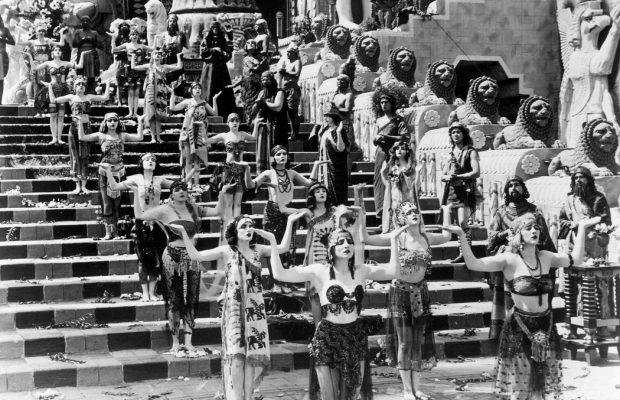
Toronto Film Society presented Intolerance (1916) on Monday, November 21, 1966 as part of the Season 19 Monday Evening Silent Film Series, Programme 2.
(Main Auditorium, UNITARIAN CHURCH, 175 St. Clair West)
~~~~~~~~~~~~~~~~~~~~~~~~~~~~~~~~~~~~~~~~~~~~~~~~~~~~~~~~~~~~~~~~~~~~~~~~~~~~~
Programme No. 2
Monday November 21, 1966
8:15 pm
Commemorating the 50th Anniversary of
D.W. Griffith’s
Intolerance
Love’s Struggle Throughout the Ages
In a prologue and two acts
Copyright 1916
Wark Producing Corp. David Wark Griffith
~~~~~~~~~~~~~~~~~~~~~~~~~~~~~~~~~~~~~~~~~~~~~~~~~~~~~~~~~~~~~~~~~~~~~~~~~~~~~
Prologue (4 reels)
ACT I (4 reels)
intermission
ACT II (5 reels)
(The “reels” refer to theoriginal 35mm version. One reel of a 16mm reduction usually accommodates four reels of the original).
NOTE: We plan to run the film at a speed of 18 frames per second (rather than the original 16 fps), which should keep the running time of the film a little under three hours. Even with only a short intermission, however, this will run us pretty late, so please be extra punctual. We’re going to have to start rolling the film on the dot of 8.15–whether anybody’s here or not! (And if you want to be sure of your favourite seat, we suggest you get here even earlier; Intolerance seems to be our biggest drawing card this season, and we are anticipating a full house).
CREDITS:
Directed by David Wark Griffith
Photographed by G.W. Bitzer, assisted by Karl Brown
(Previewed at Riverside, California, August 6, 1916;
opened at the Library Theatre, New York, Sept 5, 1916)
(According to Eileen Bowser, assistant curator of the Museum of Modern Art Film Library, “It has been estimated from the running time that Intolerance was about 13,500 or 13,700 feet at the time it opened” (which would make 14 reels), “though Lillian Gish remembers seeing an earlier four-hour version”).
CAST:
The Woman Who Rocks the Cradle…………………………Lillian Gish
The Modern Story
Her Father………………….Fred Turner
The Boy………………………Robert Harron
Jenkins………………Sam de Grasse
Mary T. Jenkins…………..Vera Lewis
Uplifters…………….Mary Alden, Pearl Elmore, Lucille Brown, Luray Huntley, Mrs Arthur Mackley
The Friendless One……..Miriam Cooper
Musketeer of the Slums….Walter Long
The Policeman…………….Tom Wilson
The Judge……………..Lloyd Ingraham
Father Farley…………..Rev. A.W. McClure
Friendly Neighbor……..Max Davidson
Striker……………..Monte Blue
Debutante……….Marguerite Marsh
Owner of car…………..Tod Browning
Chief Detective………..Edward Dillon
Jenkins’ Secretary………Clyde Hopkins
The Warden……….William Brown
Wife of the Neighbor……Alberta Lee
The Judean Story
Mary the Mother…………Lillian Langdon
Mary Magdalene………….Olga Grey
Bride of Cana………….Bessie Love
Bridegroom………….George Walsh
The French Story
Prosper Latour……………Eugene Pallette
Her Father…………….Spottiswoode Aiken
Her Mother……………Ruth Handforth
The Mercenary………A.D. Sears
Charles IX………….Frank Bennett
Catherine de Medici……..Josephine Crowell
Marguerite de Valois………Constance Talmadge
Henry of Navarre………..W.E. Lawrence
Admiral Coligny……….Joseph Henabery
Babylonia Story
The Rhapsode…………..Elmer Clifton
Belshazzar…………..Alfred Paget
Princess Beloved………Seena Owen
King Nabonidus……….Carl Stockdale
High Priest of Bel………..Tully Marshall
Cyrus the Persian………George Siegmann
Judge……………….George Fawcett
Old Woman………Kate Bruce
Solo Dancer…………Ruth St Dennis*
Slave………………Loyola O’Connor
Charioteer…………..James Curley
Babylonia Dandy………Howard Scott
Girls of the Marriage Market…Alma Rubens, Ruth Darling, Margaret Mooney
Favorites of the Harem……….Mildred Harris, Pauline Starke, Winifred Westover
(Among the extras are said to be such stars as Douglas Fairbanks, Sir Herbert Beerbohm Tree and De Wolf Hopper, and such future stars as Carmel Myers, Jewel Carmen, and Carol Demspter; but not, as often claimed, Colleen Moore)
*We seem to recall having read somewhere that in actual fact Miss St Dennis never did appear in the film, though we believe her dancers do. Can anyone confirm this? [Check out two answers by Louise Brooks and Ted Shawn in the Excuse My Dust and The Mollycoddle Film Notes]
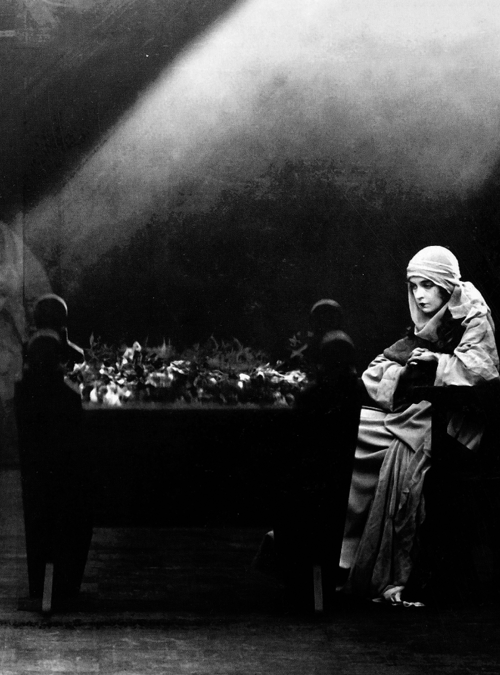
D.W. GRIFFITH’S Intolerance
(One film’s struggle throughout fifty years)
D.W. GRIFFITH: Program notes for the 1933 revival:
The stories will begin like four currents looked at from a hilltop. AT first the four currents will flow apart, slowly and quiety. But as they flow, they grow nearer and nearer together, and faster and faster, until in the end, in the last act, they mingle in one mighty river of expressed emotion.
There has been so much written about Intolerance that it seemed pointless to add anything to the vast pile of literature. So we’ve decided to take inspiration from Griffith himself and provide a montage of excerpts from this literature, using such Griffithian devices as cross-cutting, flashback, masking, copious subtitles (both linking and explanatory)–and (we regret) inordinate length.
* * *
TERRY RAMSAYE: A Million and One Nights (1926); Chapter 76:
While the business of the motion picture wasmuddling through into its new alignments of 1916, D.W. Griffith dared forth with the most venturesome experiment in all the history of film technique–the picture entitled Intolerance.
This production earns a place in motion picture history sheerly on that element of technique. It was the first and only film fugue.
Intolerance is of interest to the student of the motion picture in its relation to the evolution of the art of screen narration under Griffith. Intolerance was the last word in a sequence of experiments which began in Griffith’s Biograph period, in the course of which in 1910 he produced a version of Enough Arden with cutbacks and simultaneous lines of action.
IRIS BARRY: Museum of Modern ARt Film Notes (also reprinted in “D.W. Griffith: American Film Master” (1940; 1965)):
The film Intolerance is of extreme importance in the history of the cinema. It is the end and justification of that whole school of American cinematographybased on the terse cutting and disjunctive assembly of lengths of film, which began with The Great Train Robbery and culminated in The Birth of a Nation and in this. All the old and many new technical devices are employed in it–brief, enormous close-ups not only of faces but of hands and of part of the screen’s area for certain shots; camera angles and tracking shots such as are commonly supposed to have been introduced by German producers years later; and rapid crosscutting the like of which was not seen again until Potemkin.
* * *
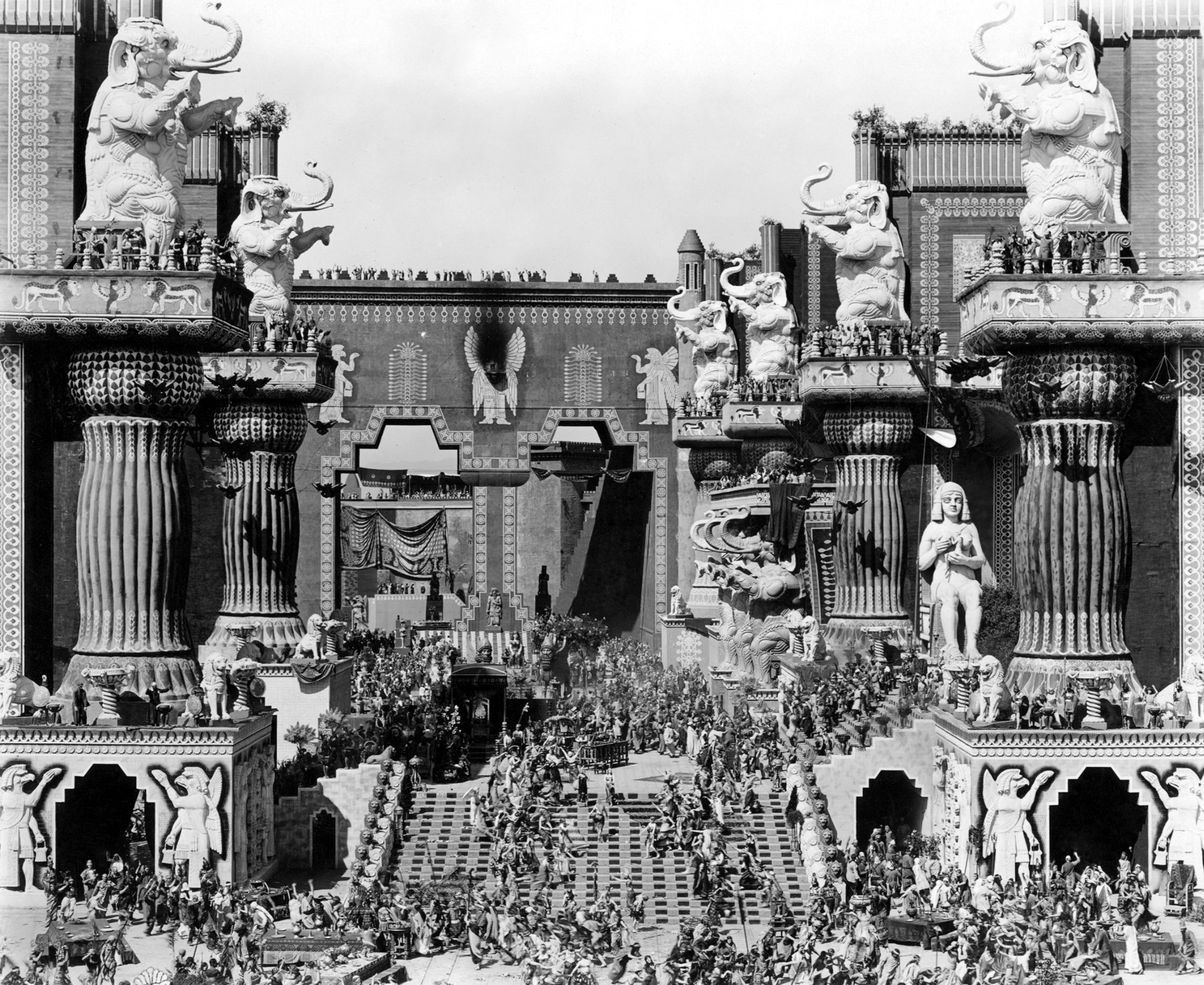
TFS SILENT SERIES NOTES (March 16, 1964):
Born January 23, 1875, in Kentucky….Griffith’s original ambition was to be a writer; it is said that he first became an actor in order to gain first-hand knowledge of stage requirements. At any rate, he was a fairly successful actor, and had had a play produced professionally in 1907; but in the spring of 1908, being temporarily out of work and needing money, he swallowed his pride and sought work in the Biograph studio on 14th Street in New York… He got a day’s work at Biograph, was asked to return, and was soon working steadily as an actor,–and also selling stories to them for $15.00 each… Not long after this… the job of director was offered to Griffith, who accepted it, not without hesitation, and remained with Biograph till 1913, turning out one-reelers at the rate of two a week. For his first two years or so in movies, he used an alias: “Lawrence Griffith”, intending to reserve his correct name, David Wark Griffith, for his more respectable occupations, such as writing and the theatre.
In 1913 he made his first feature, the four-reel spectacular Judith of Bethulia. The Biograph top-brass were so insensed at his having made a feature, contrary to company policy, that Griffith was deprived of his authority, whereupon he quit Biograph, and after a brief spell with another company, he formed his own company. With him went most of his devoted actors and technical staff from Biograph.
It was with this company that he produced hsi epic film of the Civil War and the Reconstruction, The Birth of a Nation. When this film was completed (but before it was released) he began work on his next film, The Mother and the Law.
LEWIS JACOBS: The Rise of the American Film (1939):
The story for this picture was based on the Stielow case, then making headlines in newspapers, and upon a federal industrial commission’s report of the killing of nineteen employees by a chemical manufacturer’s “Goth” (as Griffith termed the militia) during a strike for higher wages.
Shortly before The Mother and the Law was finished, The Birth of a Nation was released, opening at the Liberty Theatre in New York on March 3, 1915. The impact of this film was tremendous, but its anti-Negro bias roused storms of disapproval and demands for its suppression. Griffith, who had thought that for a Southerner he had bent over backwards to be fair to both sides, was hurt and bewildered by this outcry, and indignant at what he considered an attack on the freedom of speech.
TERRY RAMSAYE:
When Griffith returned to California from his presentation of The Birth of a Nation and its terrific tangle of censorship struggles, his mind was occupied with reflections and calculations which inevitably were to color his subsequent work.
While Griffith was casting about for something which should be his pretext and inspiration for outdoing The Birth of a Nation he was reviewing the troubles he had had with that picture, and seeking half-consciously a solution of the problems presented.
Out of this was born the impulse to let the screen itself reveal the cruel, ridiculous and wasteful consequences of intolerance–censorships by the public will–by a presentation of social, religious and economic struggles down the aisles of history.
Griffith saw the picture in bits and splotches of action first and then cast about for some thread on which they could be strung to give cohesion, continuity and conviction to the whole preachment. Griffith found what he sought on a page of Whitman’s “Leaves of Grass”:
…endlessly rocks the cradle,
“Uniter of here and Hereafter”.
The lines of the poet supplied Griffith with the pictorial suggestion he was seeking, the thread to join his tales of intolerance.
Ramsaye’s misquotation of Whitman has been perpetuated by other film historians (who as a breed seem content to recopy each other without rechecking the source material). For those of you who are curious, the opening lines of Walt Whitman’s poem (incidently the recent APA production of We Comrades Three opened with these same lines) are as follows:
OUT OF THE CRADLE ENDLESSLY ROCKING
Walt Whitman
Out of the cradle endlessly rocking,
Out of the mocking-bird’s throat, the musical shuttle,
Out of the Ninth-month midnight,
Over the sterile sands and the fields beyond, where the child leaving his bed wander’d alone, bareheaded, barefoot,
Down from the shower’d halo,
Up from the mystic play of shadows twining and twisting as if they were alive,
Out from the patches of briers and blackberries,
From the memories of the bird that chanted to me,
From your memories sad brother, from the fitful risings and fallings I heard,
From under that yellow half-moon, late-risen and swollen as if with tears,
From those beginning notes of yearning and love there in the mist,
From the thousand responses of my heart never to cease,
From the myriad thence-arous’d words,
From the word stronger and more delicious than any,
From such as now they start the scene revisiting,
As a flock, twittering, rising, or overhead passing,
Borne hither, ere all eludes me, hurriedly,
A Man, yet by these tears a little boy again,
Throwing myself on the sand, confronting the waves,
I, chanter of pains and joys, uniter of here and hereafter,
Taking all hints to use them, but swiftly leaping beyond them,
A reminiscence sing.
(and so on for another seven pages….)
(Note that according to Whitman it is not the “cradle endlessly rocking” which is the “uniter of here and hereafter”, but himself as poet).
TERRY RAMSAYE:
The Griffith idea, which he labelled for selling purposes Love’s Struggle Through the Ages was more actually a litany of human hates, to be told by the interweaving of four periods. For his contemporary sequence, Griffith had a modern melodrama suitable to his purpose. It was The Mother and the Law, with Mae Marsh and Robert Harron in the leading roles… This picture had been scheduled for release through the Mutual Film Corporation as a “Master Picture” only to be withdrawn with the secession of the New York Motion Picture Corporation and the formation of Triangle. The three historical periods chosen were to give occasion to picture on a grandiose scale the fall of Babylon before the hoards of Cyrus, the Christ legend of Judea, and the massacre of the Huguenots on St Bartholomew’s Eve in France. All these were interwoven in the assembly of the picture with the time lapses covered by a mysterious, soft-focus, half-lighted picture of Lillian Gish rocking a cradle–or as Griffith’s title said it: “A golden thread binds the four stories–a fairy girl with sunlit hair–her hand on the cradle of humanity”.
* * *
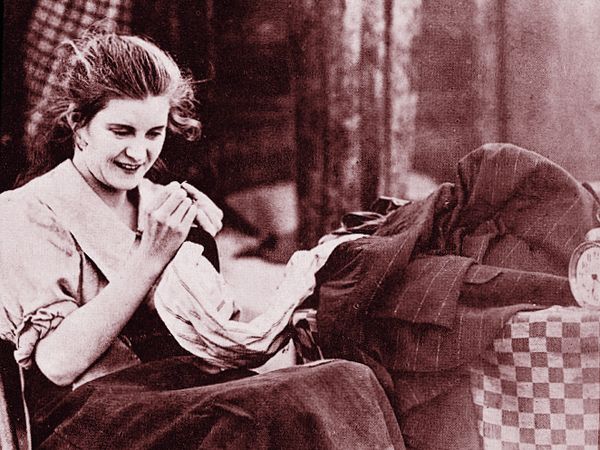
LEWIS JACOBS:
In making Intolerance Griffith was faced with a financial problem even greater than those encountered in the making of The Birth of a Nation. Although he had command of plenty of money after the triumph of that film, his expenditures on this new enterprise reached a fantastic high.
RAMSAYE:
It has been given out that Griffith’s payrolls for actors and extras in Intolerance for long periods ran as high as $12,000 a day.
JACOBS:
Settings for Babylonian walls 300 feet high and for elaborate streets in Paris, Judea and New York (miniatures and processing were still unknown), not to mention the expense of costumes, cost thousands more. The grandiose banquet scene for Belshazzar’s feast is said to have cost $250,000.
EILEEN BOWSER:
Incredibly, these sets had been built without any architectural plans–they just grew from day to day as Griffith had new ideas and told his carpenters what he wanted.
WILLIAM K. EVERSON:
Amazingly, most of the picture was shot with a single small hand-cranked camera.
JACOBS:
When Griffith’s backers became alarmed and refused to put up any more money, Griffith bought them out, going heavily into debt to do so.
RAMSAYE:
When the shooting and the shouting were over the cost totalled the reputed figure of $1,900,000 and there were 300,000 feet of negative. Intolerance in the rough was so big that it took seventy-five hours to look at it. It was edited to thirteen reels. Let us recall in contrast that at the end of 1895, the first year of film production, the total studio costs of the industry were $1,110. Annabelle the Dancer, the master production of 1895, was thirty-five feet long.
W.K. EVERSON:
The American Movie (1962): Griffith conceived and produced this whole production without any kind of scrip or written notes to guide his editing.
* * *
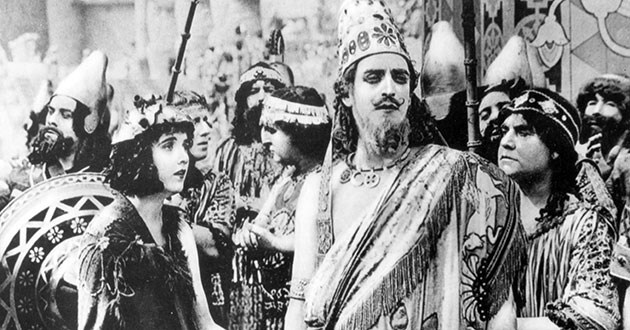
RAMSAYE:
Intolerance opened at the Liberty Theatre in New York, scene of The Birth of a Nation‘s triumph, on September 6, 1916. It played in legitimate theatres in all the major cities, here and abroad. It was inevitably a sensation and a topic of considerable debate. It was mostly a debate about Griffith.
D.W. GRIFFITH:
(In this film) events are not set forth in their historical sequence, or according to accepted forms of dramatic construction, but as they might flash across a mind seeking to parallel the life of the different ages.
JACOBS:
First shown publicly September 5, 1916, the film evoked mixed criticism. Many of the critics of the day were bewildered by the cutting style, could not follow the story from period to period, and were confused by the “interminable battle scenes” and the recurrent “mother rocking her baby”. They found the idea obtuse and the effects exhausting.
(Can you imagine the reaction of those critics if they had been faced with a film like Last Year at Marienbad or even Each Day that Comes?)
RAMSAYE:
Griffith sought by concrete emotional illustrations from history to create a dramatic appreciation of an abstract principle in the minds of the screen masses. If they had ever had the deductive capacity for digesting historical experience, the conditions of intolerance which gave him his inspiration would not have continued for the two thousand four hundred and fifty four years between the fall of Babylon and The Birth of a Nation.
The public never goes anywhere to intellectualize. It went to Intolerance in just sufficient numbers to find out that it did not know what it was all about. The consumers of the great common denominator of the emotional arts found themselves confronted by a specimen of screen algebra, ornate but confusing.
To Griffith the scenes of Lillian Gish rocking a cradle did mean “a golden thread” denoting the continuity of the human race and binding his fugue of period pictures. But to the movie audience a picture of a cradle is a hieroglyph meaning “there is going to be a baby”, “there is a baby” or “there was a baby”. It does not mean the continuity of the race, and it does not suggest intolerance–rather the opposite. The introduction of a cradle in a motion picture is more likely to set the audience to counting back nine months on its finger than it is to set it to reflecting on man’s inhumanity to man.
Picture-wise exhibitors looked at the cradle scenes and deduced that Griffith was trying to put something over on the Pennsylvania board of censorship.
So, Intolerance was a magnificent failure.
JACOBS:
At the time of the picture’s release something like a war spirit was growing in the nation, and people could not reconcile the pacific intentions of Intolerance–intentions which they understood mainly through its titles–with the current militarism. As the country moved closer to active participation in the war, opposition to the film grew more vigorous. Censured and then barred in many cities, the picture suffered a sad and ignoble fate. Although it stands as a milestone in the progress of the American film, for Griffith it proved to be a financial disaster of crippling proportions. Through his failure he lost his independence and, no doubt, much of his great zeal.
EILEEN BOWSER: (Forward to the MMA’s publication (1966) of Theodore Huff’s shot-by-shot analysis of Intolerance:
It is no longer possible to see the film just as it was when it first appeared in 1916. It was then from 13,500 to 13,700 feet long. Today, the film library’s preservation master print, compiled from a variety of materials, measures only 11,811 feet. As was his habit, D.W. Griffith accompanied Intolerance on its first runs in the major cities, cutting the prints at the theatres, striving to improve it. The result was that the print shown in Boston was not necessarily the same as that shown in New York, and it may be that neither was exactly matched by the original negative, In 1919 Griffith disastrously cut into the original negative without making any duplicate, in order to make new films of two of the stories in Intolerance: Fall of Babylon and The Mother and the Law. Insasmuch as there was no written record, it was never possible to restore the Intolerance negative to its original state, and any attempt to do so from memory was delayed for many years because the negatives of The Fall of Babylon and The Mother and the Law were still needed to fill print orders. Meanwhile, the original prints of Intolerance began to wear out, and portions were cut because of damage or deterioration. The studio records show that Griffith personally tried to reconstruct good prints for the major revivals of Intolerance over the years, but they were always short of the original length by at least two reels. Important as Intolerance is to film history, to Griffith it was a financial loss, and he did not care to spend more money insuring that there should be good protection material.
We should add that there is also another reason why we shall not be seeing this film exactly as audiences saw it fifty years ago:
JACOBS:
Needless to say, our 16mm print will not be on tinted stock. But some of our members may recall that several years ago, when the TFS Main Series was held at the Odeon-Hyland, we showed Intolerance in one of the original 35mm tinted prints.
EDWARD WAGENKNECHT: The Movies in the AGe of Innocence (1962)
Yet for all the training that the Biographs ought to have given them, audiences of the time were not up to Intolerance; financially the film was a disastrous failure. Worse still, later critics have sometimes been quite as stupid, chattering about the difficulty of following four different stories, and much besides. I had no difficulty in following them at the age of sixteen, and I do not believe that I should have experienced any if the film had been shown to me in a prenatal state. If, as has been stated, spectators were confused by the woman out of Leaves of Grass who rocked the cradle marking the transition from one age to another, they must all have been mental defectives. John Howard Lawson says that nothing happened to her. What was supposed to happen to her? In a deeper sense everything that took place in the film happened to her, for all the characters were her children. Much as I respect Julian Johnson as a film critic, he seemed to me quite absurd when he wrote in Photoplay (and Lewis Jacobs quotes him approvingly): “The fatal error of Intolerance was that in the Babylonian scenes you didn’t care which side won. It was just a great show”. Didn’t care whether Belshazzar and Nabonidus continued to maintain peace and the arts of civilization in Babylon or whether the barbarian Cyrus overran it with his savage hoards? Didn’t care whether religious toleration survived under Belshazzar or whether the treacherous, intolerant priest of Marduk succeeded in his treason? Didn’t care whether Belshazzar and the Princess Beloved lived out their happy lives in peace or must kill themselves to avoid capture? Didn’t care whether the gallant Mountain Girl, her heart aflame with unselfish love for her king, succeeded in saving him or not? Then what in the world do Mr. Johnson and Mr. Jacobs care about in the theatre?
Mr. Wagenknecht, I think, overlooks the fact that the average person knows his Babylonian history only through the familiar biblical account, in which Belshazzar “the king of the Chaldeans” is the Bad Guy, and his overthrow by “Darius the Median” is consequently a Good Thing. To find him the hero of Griffith’s story is rather confusing, and audiences can be forgiven for not being quite sure which side they were supposed to be rooting for.
According to the Encyclopedia Britannica, and contrary to the Book of Daniel, the real Belshazzar was never king, nor was he the son of the late King Nebuchadnezzar. He was the son of King Nabonidus, who had seized the throne of Babylonia in a palace revolution. Belshazzar was thus the Crown Prince; he was also the General in command of the Babylonian armies. Nabonidus, in spite of his violent accession, seems to have been uninterested in military matters and left the defence of his kingdom to others, chiefly his eldest son Belshazzar. Nabonidus was despised by the military party because he preferred to indulge his passion for antiquarianism: excavating the foundation records of the temples and determining the dates of their builders. (Babylon was at that time over 1200 years old. The ancient city had been destroyed some 150 years prior to Nbonidus’ time by Sennacherib, but had been completely rebuilt). Nabonidus also tried to reconstruct the temples of Ishtar, which had been destroyed two centuries before, and this undoubtedly earned him the ire of the priests of Marduk (or Bel), though one would think they would be grateful to him for trying to centralize the Babylonian religion in the Temple of Marduk, an act which alienated the various local priesthoods. At any rate, the conquest by Cyrus the Great (not Darius) seems to have been facilitated by certain “fifth columnist” activity. (This may also have involved the exiled Hebrews, thus accounting for Cyrus’s subsequent generosity in restoring them to their homeland). At any rate, Cyrus defeated the Babylonian army in battle in June of 538 B.C. (Griffith naturally simplifies the events for dramatic purposes). Belshazzar’s death actually didn’t occur till three months later, whereupon Cyrus had himself declared King of Babylonia–Nabonidus having been deposed but given a new job as some kind of provincial governor. (Cyrus wasn’t really a Bad Guy either).
* * *
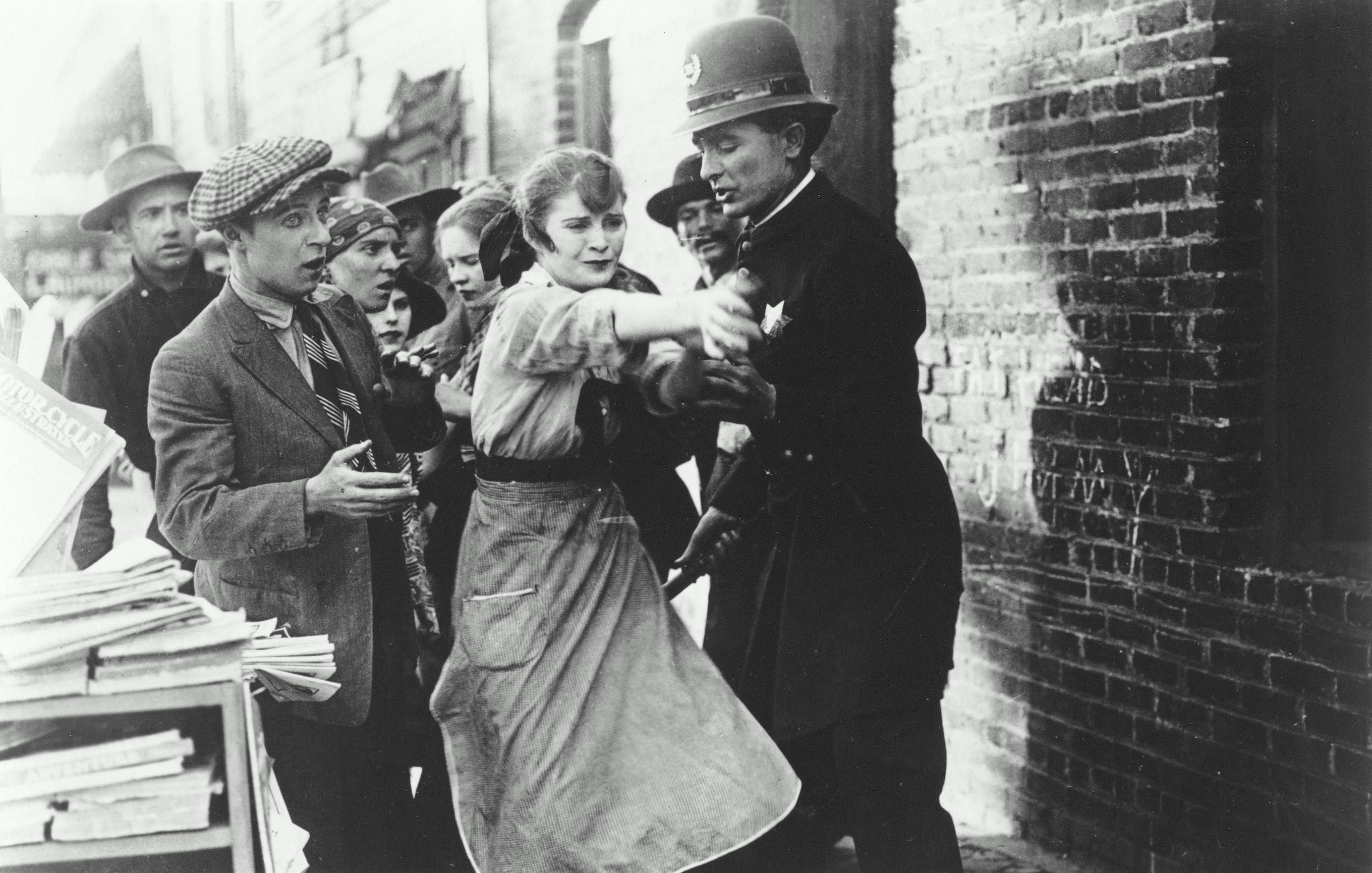
IRIS BARRY:
Though Intolerance has been revived time and again, especially in Europe, unlike The Birth of a Nation it was not a great popular success. Audiences find it bewildering, exhausting. There is so much in it; there is too much of it; the pace increases so relentlessly; its intense hail of images–many of them only five frames long–cruelly hammers the sensibility; its climax is near hysteria. No question but that the film is chaotic, difficult to take in, or that it has many evident faults. The desire to instruct and to reform obtrudes awkwardly at times. The lyricism of the subtitles accords oddly with the footnotes appended to them. The Biblical sequence is weak, though useful dramatically to point up the modern sequence. The French episode seems to get lost, then reappears surprisingly.
Of the Babylonian and the modern episodes little adverse criticism is permissible, and only admiration remains for the last two reels, when the climax of all four stories approaches and history itself seems to pour like a cataract across the screen. In his direction of the immense crowd scenes, Griffith achieves the impossible, for –despite their profusion and breathtaking scale–the eye is not distracted, it is irresistably drawn to the one significant detail. The handling of the actors in intimate scenes has hardly been equaled either for depth or for humanity, particularly in the modern sequence.
EVERSON:
In terms of audience appeal its Babylonian sequence–then as now–comes off best… In spite of the superb crowds, however, it is the modern sequence, without spectacle, that is strongest dramatically. It had a lasting effect on film-makers, influencing directors from Fred Niblo and John Ford in the U.S.A. to Eisenstein and Pudovkin in Russia.
BARRY:
The sociological implications of the modern episode seem, perhaps, more pointed now than they did in 1916. They undoubtedly account for the fact that Lenin early in 1919 arranged to have Intolerance toured throughout the USSR, where it ran almost continuously for ten years. The film was not merely seen there; it was also used as study material for the post-revolutionary school of cinematography, and exercised a profound influence on the work of men like Eisenstein and Pudovkin. It is true that Griffith is largely instinctive in his methods where the Russian directors are deliberate and organized; but it was nevertheless in large measure from his example that they derived their characteristic staccato shots, their measured and accelerated rhythms and their skill in joining pictorial images together with a view to the emotional overtones of each, so that two images in conjunction convey more than the sum of their visible content.
* * *
JACOBS:
With all its profound excellence, Intolerance nevertheless had many unfortunate weaknesses that marred its complete realization. The most obvious were Griffith’s inherent sentimentality and his tendency to overdramatize. These weaknesses had appeared in The Birth of a Nation but, in view of that picture’s subject and story, were less glaring. In Intolerance the maudlin names “little Dear One”, “Brown Eyes”, “Princess Beloved”, all hangovers from the movies’ past, are laughable. the extravagant posturing and the black-and-white characterizations are also hangovers from the pre-war period.. Griffith’s overindulgence in pious, highly moral, and frequently saccharine explanatory titles is another defect.
WAGENKNECHT (continuing from the paragraph quoted on page 8):
This is not to say that Intolerance has no faults. As Iris Barry has pointed before me, the Judean story is undeveloped (it covers only the marriage at Cana, the incident of the woman taken in adultery, and the Crucifixion) while the French story gets lost and then, after we have almost forgotten it, surprisingly bobs up again. Moreover, the intolerance plays so slight a role in the modern story that the unity of the film is somewhat impaired… Griffith’s titles keep harping on intolerance as if he knew that it was not sufficiently involved in the action so that the audience would naturally keep it in mind.
(This would be a by-product of the fact that the modern story was already a completed film before Griffith decided to incorporate it into a treatise on intolerance).
RAMSAYE:
The concept denoted by the word “Intolerance” is an abstraction of thought. A motion picture which has to be thought about is in the same status as a joke which has to be explained.
PUDOVKIN:
There is a strong discrepancy between the depth of the motif and the superficiality of its form.
JACOBS:
The overemphasis upon the spectacle outweighed the message. The formal concept ran away with the thematic; the execution was brilliant, but the point was forgotten. This discrepancy between the admirable structure and the uncertainty of the message is the reason why many people regard The Birth of a Nation as the greater of the two films. In that film one is forced, by the way the case is presented, to side with the South; in Intolerance the spectator is emotionally aroused but not as a partisan.
WAGENKNECHT:
There are other faults, weaknesses, improbabilities. Griffith had infinite charity for publicans but none for Pharisees, and he depicts “uplifters” and foundations as one-sidedly in Intolerance as he depicts the Negroes in The Birth of a Nation.
The acting in Intolerance is a strange combination of the intensely naturalistic and the stylized. The former is seen at its best in Mae Marsh’s wonderful courtroom scenes and again in her moving reunion with Robert Harron when he is taken down from the gallows. But even Mae Marsh is sometimes required to prolong her comedy scenes, or to force the note, until the point has been blunted. Constance Talmadge’s Mountain Girl is more theatricalized and directed for comic effect, but it is certainly very good of its kind. On the other hand, Belshazzar and the Princess Beloved are images rather than characters, like Lincoln in The Birth of a Nation. Josephine Crowell’s Catherine de Medici is a caricature, not a character; she acts at the audience, not to or with the other actors, and one need only remember her simple, deeply sincere Mrs. Cameron in The Birth of a Nation to b sure that this was not Mrs. Crowell’s fault. In what seems to have been intended to indicate a spasm of conscience on St. Bartholomew’s morn, she as made to flutter like an adolescent.
Only a very great work of art could triumph in spite of such serious faults, and Intolerance is a very great work of art.
* * *
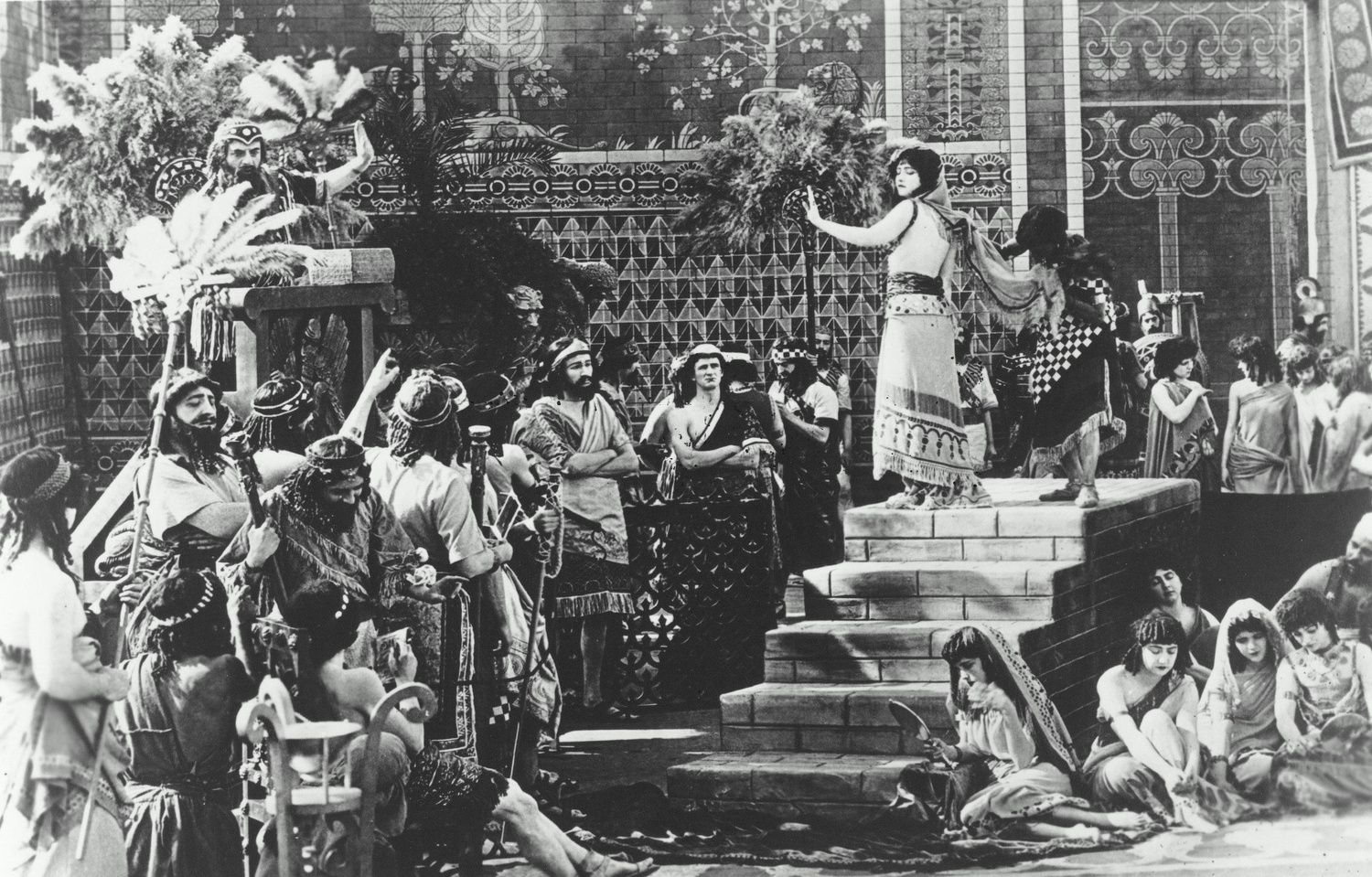
It is exactly half a century since Intolerance first astounded and bewildered critics and public alike. How does it look to us in 1966? Is it still, as Wagenknecht insists, “incontestibly the greatest motion picture ever made”? After half a century of some very great film, does Intolerance still “work”? Or is it merely an astonishing primitive, “very good for its time”? Is it really a good film, or is it merely a marvelous quarry of film technique?
We raise the questions, but we leave the answers to you. You will be seeing the film for yourselves. But some of you are about to see it for the first time, and for you it is only fair to offer a word of warning:
Intolerance may have been ahead of its day in many ways; but it is also very much of its day, and labors under the heavy encrustation of fifty years of changing tastes. Much that was conventional and unnoticed in 1916 has since gone out of fashion and now looks quaint and absurd. Subtitles in themselves are always a source of merriment to the young newcomer to silent films; but even the more sophisticated film society habitué, brought up on the notion that the ideal silent film tells its story entirely with pictures and disdains to lean on explanatory subtitles for support, is shocked at Griffith’s lavish use of titles to explain and predict and to comment.
But the titleless film was an ideal that didn’t come into force until the mid-1920’s. In the mid-teens, film-makers were still intoxicated by the discovery that the screen-writer shared with the novelist a device that was denied to the playwright: the use of the written word to make a direct comment or explanation. And if one picture is worth a thousand words, a few well-chosen words can often obviate the necessity of a thousand pictures; so audiences in those days were accustomed to many a film being simply a series of narrative subtitles illustrated by a few pictures. It’s a stage which films passed through in their development. If it’s a fault, it was not peculiar to Intolerance.
Unfortunately, literary styles change too. Griffith, as we know, fancied himself as a writer; but he grew up in the Victorian era, which loved the romantic, quasi-poetic style of writing. Nowadays, when poetry reads like bald prose and prose reads like Hemingway, Griffith’s “lyricism” is at times downright embarrassing. But presumably it was at least acceptable in 1916. (Maybe even the interpolated “Brown Eyes–ah me! ah me!” at a moment of tense drama actually heightened the pathos–instead of, as now, crushing it).
And as if this weren’t handicap enough, our ideas of drama have changed. Griffith was the Alfred Hitchcock of his day, a master at whipping up suspense; but the “last-minute rescue”, once the backbone of every good movie, has become a joke, and audiences of today, stubbornly refusing to become involved with the characters, find it all hilarious.
These, then, are not to be classified as “faults” in Intolerance, but they do undeniably prevent this 1916 film from making its full impact in 1966. In short, if we are to appreciate this famous film classic properly, we must be prepared to be “tolerant” of the styles and mannerisms of a by-gone era.
* * *
It is interesting to notice how different generations differ in their reactions. I first saw Intolerance at the Museum of Modern ARt during a visit to New York in 1939. The audience laughed irreverently and immoderately through a good part of the film yes, you young whippersnappers, your generation didn’t invent the practice of laughing at silent films; your mothers and fathers did it too!) until we came to the scene where the soldier is decapitated. The audience was noticeably jolted by this touch of brutal realism unknown in contemporary films, and after that there seemed to be a more respectful attitude toward the film. Nowadays, however, audiences reared in “sick” jokes find this scene hilariously funny. Oh well, perhaps the next generation will find the amous eyeball scene in Le Chien Andalou equally comical.
* * *
It has been estimated that if Intolerance were to be remade today, exactly as it is now except for the addition of a sound track, its cost would be well over thirty million dollars. We might add that it would also be rejected by most serious film critics. Historical spectaculars are “out” nowadays–especially if they cost a lot of money; and Intolerance today would undoubtedly get the same short shrift as Cleopatra, Spartacus, et al., whose reviews could have been predicted before the film was even finished. (We are sometimes tempted to wonder if the abiding affection for Griffith’s Intolerance is not simply due to its having been a box-office failure in its own time).
* * *
One thing we can be sure: the theme is still timely. If Christ were to return to earth today, he might or might not be crucified again–but he most certainly would be ordered to get his hair cut.
““““““““““““““““““““““““““““““““““““““““““““““
AN APPENDIX TO LAST WEEK’S NOTES
(1) We neglected to point out that the night scenes in The Cradle of Courage would originally have been printed on stock that was tinted blue to give the effect of darkness. Hart’s flashlight would not have seemed as unnecessary as it did in our non-tinted 16mm print. (Cf page 8, above).
(2) An important credit was omitted from the list of the makers of the film Eight-Fifteen,–namely, the excellent cameraman, Michel Lambeth (who also owned the camera). Sorry about that!
““““““““““““““““““““““““““““““““““““““““““““““
There will be a nine-week interval before the next program of our season: Mondy January 23, 1967. In contrast to the loftiness of “America’s foremost film masterpiece”, that program will offer a double-bill of two 1920 films which were made frankly and unpretentiously as light entertainment films, vehicles to exploit the personalities of their popular stars: Excuse My Dust (Wallace Reid) and The Mollycoddle (Douglas Fairbanks). A fun show; . . to hell with Art!
Notes by Fraser Macdonald

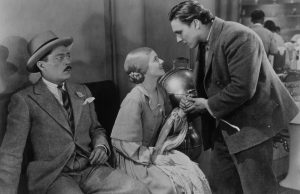
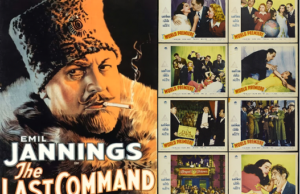
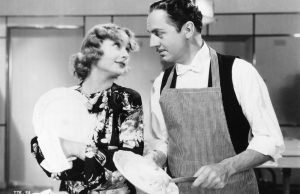






Leave a Reply